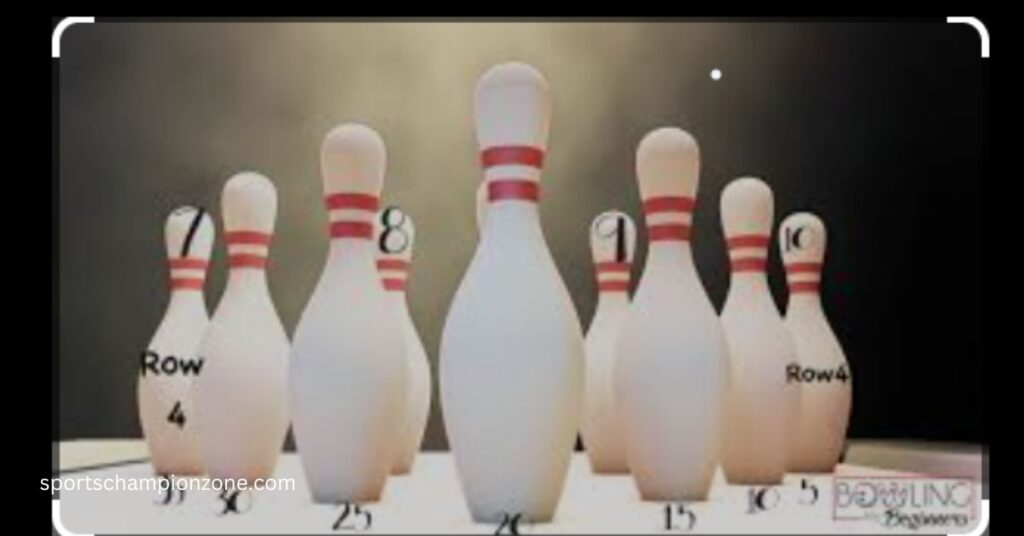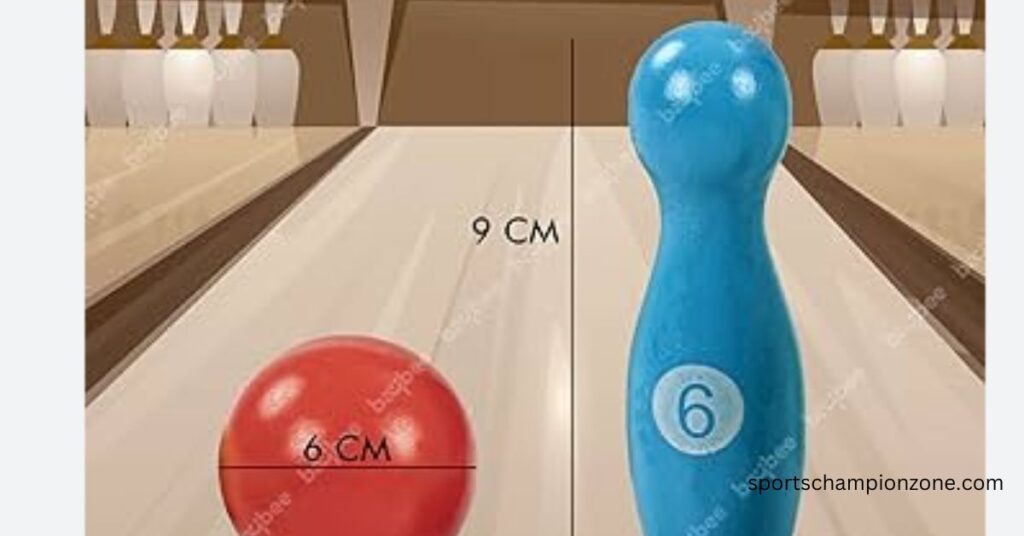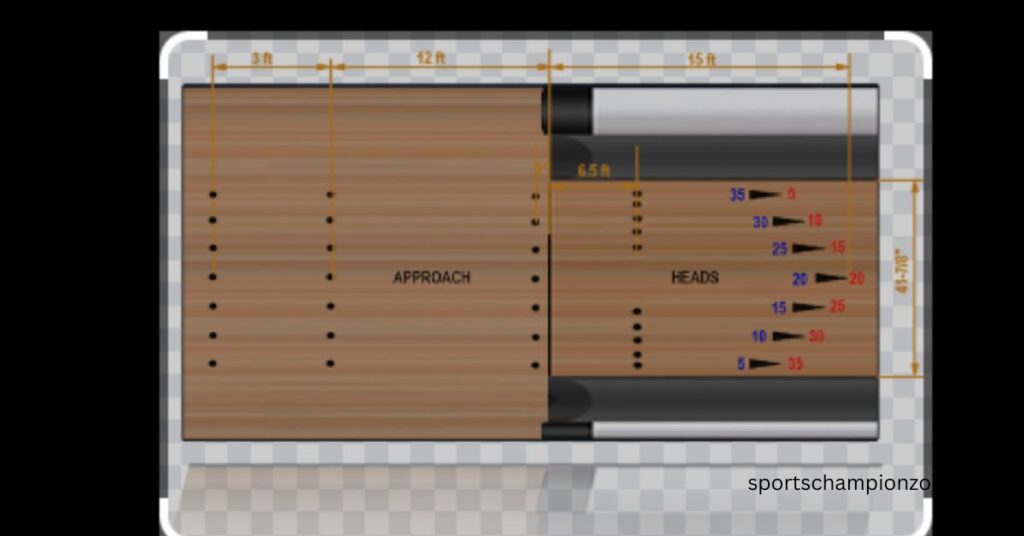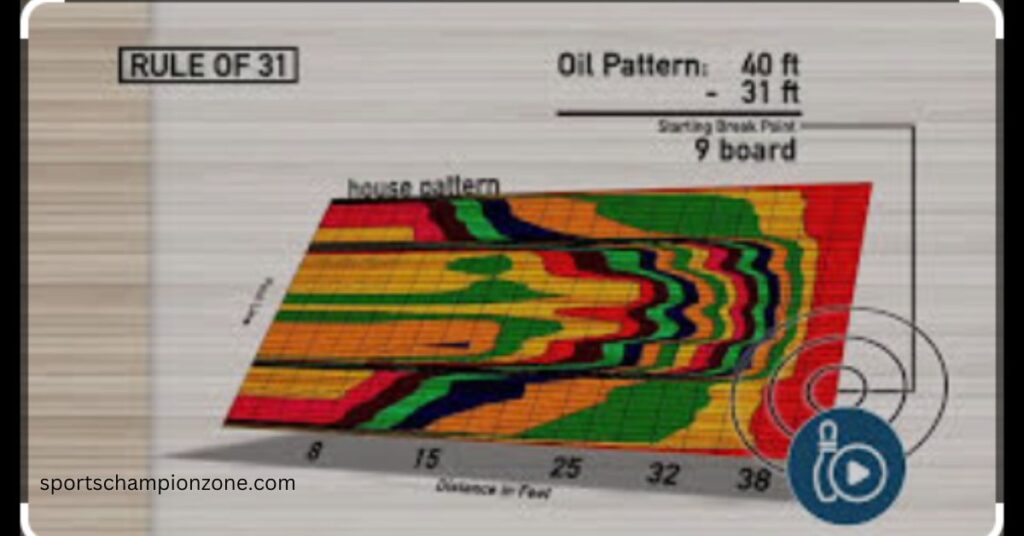In bowling, commonly, there are 39 board numbers used, numbered continuously from left to right on the bowling lane. These numbers assist bowlers with pointing their shots precisely and change their methodology in light of lane conditions. Bowling board numbers are an essential part of the game, significant for both scoring and procedure. We should separate what they are and why they matter.
In bowling board numbers allude to the numbered boards or bolts set along the bowling lane. These sheets are ordinarily located in the methodology region, which is where bowlers stand to convey their shots. The boards are numbered successively from left to right, typically beginning from board one on the extreme left half of the lane.

How They Relate to the Lane and Pin Setup:
The bowling lane is separated into a few segments, with the methodology region toward one side and the pin deck at the other. Boards or bolts act as reference guides for bowlers toward the point of their shots. At the point when a bowler holds nothing objective on the lane, they frequently use the bowling numbers to precisely adjust their shot.
For example, a bowler could hold back nothing bolt from the right (ordinarily alluded to as “second bolt”), which relates to a particular bowling board numbers on the lane.
Introduction to Bowling Pin Numbering:
In addition to bowling board numbers, bowling pins themselves are additionally numbered for reference and scoring purposes. In conventional ten-pin bowling, each pin is numbered continuously from one to ten. Understanding pin numbering is fundamental for scoring in bowling. At the point when a bowler thumps down pins during a casing, the pin numbers are used to decide the score in light of the quantity of pins wrecked.
For example, on the off chance that a bowler thumps down pins numbered three, six, and ten, they would score three focuses for each pin wrecked, adding up to nine focuses for that edge.
Understanding Pin Numbering Overview
Understanding pin numbering is critical to dominating the sport of bowling. We should investigate how bowling pins are numbered, the three-sided pin arrangement, and why pin numbering is fundamental for scoring and system. In conventional ten-pin bowling, each pin is doled out with a number from one to ten.
These numbers are ordinarily situated on the lower part of the pins, confronting the bowler. The excess pins are numbered successively behind the headpin, with the two corner pins on either side being pins seven and ten.

Importance of Pin Numbering for Scoring and Strategy:
Pin numbering is fundamental for both scoring and vital dynamics in bowling. Whenever a bowler moves a ball down the lane, they want to wreck whatever number of pins it would be prudent to score focuses. For example, on the off chance that a bowler thumps down pins numbered three, six, and ten in a solitary edge, they would score three focuses for each pin wrecked, adding up to nine focuses for that casing.
Pin numbering likewise assists bowlers with distinguishing spare, open doors, where they can decisively mean to thump down unambiguous pins to augment their score.
The Role of Bowling Board Numbers
Understanding the job of bowling board numbers in scoring is significant for any bowler expecting to work on their game. We should separate how these board numbers impact scoring, talk about the scoring framework in ten-pin bowling, and investigate instances of what board numbers mean for scoring estimations. How Bowling Board Numbers Influence Scoring Bowling board numbers act as reference points for bowlers while pointing their shots.
By adjusting their shots to explicit board numbers on the lane, bowlers can focus on their ideal pin positions with more noteworthy precision.
Discussion of the Scoring System in Ten-Pin Bowling:
In ten-pin bowling, the scoring framework depends on the total number of pins wrecked north of the ten edges of play. Each casing permits the bowler up to two rolls of the ball, with the goal of wrecking whatever number of pins could reasonably be expected. The scoring framework grants focuses in view of both the quantity of pins wrecked in each casing and any extra rewards procured through strikes or extras.
1. Knocking Down Pins: When a bowler thumps down pins with their most memorable roll, they get a score equivalent to the complete number of pins wrecked.
2. Spares: On the off chance that a bowler thumps down all excess pins with their second roll in an edge, it’s known as an “extra.” They’re granted ten focuses in addition to extra focuses for the following roll.
3. Open Frames: On the off chance that a bowler neglects to thump down every one of the ten pins after their two rolls in an frame, it’s thought of as an “open frame,” and they get focuses just for the pins they’ve wrecked.
How Board Numbers Impact Scoring Calculations:
We should consider a guide to show how board numbers impact scoring estimations. Imagine a bowler goes for the gold bolt from the right, relating to board number 17, and thumps down seven pins with their most memorable roll.

1. Assuming the bowler goes for the gold 17 and thumps down seven pins, they’ll score seven focusing for that frame.
2. In the event that they, thump down the excess three pins with their subsequent roll, it’s viewed as an extra. They’ll get ten focuses for the extra, in addition to additional focuses for their next roll.
Adjusting Approach Based on Board Numbers:
1. Consistent Arrangement: Pick a predictable beginning situation on the method and conform to a particular board number as your objective. This consistency will assist you with creating muscle memory and working on your precision over the long haul.
2. Experimentation: Go ahead and try different things with various board numbers to find what turns out best for you. Take a stab at pointing somewhat left or right of your standard objective to perceive what it means for your shot and change as needed.
3. Practice: Invest energy rehearsing your shots from various bowling board numbers to construct certainty and knowledge of each objective. The more agreeable you are with pointing from different positions, the better prepared you’ll be to adjust to changing circumstances during a game.

Systems for Focusing on Unambiguous Pins Board Numbers:
1. Pickoff Technique: Go for the gold that permits you to take out unambiguous pins, particularly corner pins like the 7 or 10 pin. Change your point of approach and target bowling board numbers as needed to build your possibilities of hitting these hard to-arrive at pins.
2. Spare Shooting: Foster an extra shooting framework in view of block numbers to pick saves reliably. For instance, go for the gold numbers to focus on the 3-6-9 or 2-4-7 extra blends.
3. Adjustment for Lane Conditions: Be ready to make changes in accordance with your focus on technique in light of lane conditions. Assuming the paths are dry or slick in specific regions, go for the gold that make up for these circumstances to keep up with consistency in your shots.
Importance of Flexibility in Bowling Strategy:
1. Lane Changes: Bowling lanes are dynamic conditions that can change all through a game because of variables like lane oil breakdown, temperature vacillations, and lane wear. Being versatile and adaptable in your procedure permits you to conform to these progressions and keep up with consistency in your presentation.
2. Opponent Analysis: Focus on how your rivals are playing the lanes and change your methodology as needed. Assuming that you notice they’re reliably hitting specific board numbers or focusing on unambiguous pins, consider adjusting your own way to deal with countering their technique.
3. Mindset: Move toward each edge with an adaptable outlook and make changes on the fly. Bowling board numbers is as much a psychological distraction as it could be physical, so remaining open to changes and staying versatile can give you an upper hand.
Advanced Techniques for Mastering Bowling Board Numbers:
Digging into cutting edge strategies and contemplations can lift your bowling match-up to a higher level. How about we investigate a few high level procedures for dominating bowling board numbers.
1. Parallel Change: Proficient bowlers frequently use a procedure called equal change. Rather than moving their beginning position left or right on the methodology, they change their objective board numbers while keeping up with a similar beginning position.
2. Reading Ball Reaction: Understanding how your bowling ball responds to various board numbers and lane conditions is essential. Proficient bowlers give close consideration to ball movement and change their objective board numbers in light of how the ball responds to the lane surface.
3. Speed and Rev Rate Control: Controlling ball speed and insurgencies (fire up rate) can impact how the ball responds to board numbers. Proficient bowlers have dominated the capacity to change their speed and fire up rate to coordinate path conditions and target explicit board numbers with accuracy.
Exploration of Lane Conditions and Their Impact on Board Numbers:
1. Oil Pattern: Lane oil designs assume a huge part in how board numbers act during a game. Different oil examples can influence ball slip, snare potential, and generally speaking ball response, expecting bowlers to change their objective board numbers in like manner.

2. Lane Breakdown: As bowling paths are used all through a rivalry, lane conditions can change because of oil breakdown and path wear. Proficient bowlers screen lane conditions intently and adjust their focus on technique to make up for these changes.
3. Temperature and Stickiness: Natural factors, for example, temperature and mugginess, can likewise affect lane conditions and board numbers.
proficient bowlers consider these variables while changing their focus on systems during a competition.
Professional Bowlers on Navigating Board Numbers in Competitive Play:
1. Preparation and Practice: Proficient bowlers underline the significance of readiness and practice in dominating board numbers. By reenacting competition conditions during training meetings, they foster trust in their capacity to change their focus on technique on the fly.
2. Adaptability: Versatility is vital to progress in serious bowling. Proficient bowlers stay adaptable in their methodology and will make changes in view of path conditions, adversary execution, and their own game.
3. Mental Strength: Keeping a cool head under tension is fundamental for exploring bowling board numbers in cutthroat play. Proficient bowlers depend on mental strength to remain trained in their focus on technique and execute shots with certainty.
How many boards are there in bowling?
In bowling, there are normally ten boards across the width of the path. These boards are numbered from 1 to 10, with the drain being boards 0 on each side. Thus, on the off chance that you count the two sides, there are a sum of 21 boards. Each board addresses an alternate point from which a bowler can point their ball to stir things up around town. These boards assist players with changing their shots for accuracy and exactness.
How to count bowling boards?
To count bowling boards, stand at the foul line, confronting the pins. The boards are numbered from right to left, with the drain being boards 0 on the two sides. Each board is around 1.06 inches wide. In this manner, the primary board to the right is board 1, and the tenth board to the left is board 10. The count integrates the different sides, making a total of 21 boards across the lane.
What are the board numbers on a bowling lane?
On a bowling lane, the boards are numbered from right to left. The channel is seen as board 0 on the different sides. Appropriately, beginning from the channel on the right side, the boards are numbered 1 through 10, with 10 being nearest to the spot of blend in the lane. Also, the left half of the board is, moreover, numbered 1 to 10, with 1 being nearest to the middle.
Are there 10 or 12 pins in bowling?
In traditional ten-pin bowling, there are, to be sure, ten pins organized in a three-sided development toward the finish of the lane. The goal is to thump down every one of the ten pins with a bowling ball in each casing. In any case, a few varieties of bowling, for example, candlepin and duckpin bowling, highlight different pin designs and may have twelve or significantly more modest quantities of pins.
Conclusion:
Taking everything into account, dominating bowling board numbers is fundamental for bowlers hoping to work on their exhibition on the lanes. By understanding how board numbers impact scoring, focusing on unambiguous pins, and adjusting to changing path conditions, bowlers can improve their exactness, consistency, and, by and large, technique.
All through this aide, we’ve investigated the meaning of bowling board numbers, talked about the scoring framework and systems for focusing on unambiguous pins, and analyzed progressed procedures for exploring board numbers in cutthroat play. We’ve discovered that reliable arrangement, trial and error, and perception are critical to changing methodology in view of bowling board numbers. Moreover, understanding lane conditions and their effect on board numbers is vital for progress in bowling.
If you want to more detail and better information about this you can also visit:
